Prague Historic Tram 42 Route – Comprehensive Travel Guide for 2024
Prague historic tram no 42 route comprehensive tourist travel guide for 2024, including tickets, prices, practical info and off-the-beaten-track places to visit, cafes, restaurants, parks and the most popular tourist destinations in the centre of Prague.
The tram 42 is a very special circular route through the historic centre of Prague. It’s a hop on and off tram, which goes around in a loop taking about 40 minutes in total. It runs all year round at the weekends and public holidays and it’s a great way to explore Prague in style.
The route is served by different historic trams – the oldest one is from 19 century, but you can also see trams type T1, T2 and T3 from 50s and 60s of the 20 century. I still remember riding on the T3 trams with their red seats, which in winter were heated!
Since the tram number 42 route is very popular I wanted to share with you everything you need to know about this route, including all the practical information and my favourite places and attractions to see at each stop.

MY OTHER GUIDES – EXPERIENCE PRAGUE FOLLOWING THE TRAM ROUTES
Timetable & running time
The historic tram number 42 runs only at the weekends – Saturday and Sunday and during official Czech public holidays.
The tram starts at 10 am and runs in the constant loop until 6 pm with 40 minutes intervals.
How much does the historic tram ticket cost?
- Adults – 350 CZK
- Children 4-15 years – 250 CZK
- Students under the age 26 – 250 CZK
- Seniors (and or people with disabilities) – 250 CZK
- Children under the age of 3 – Free
To receive a discount you will need to prove your age or status. This can only be an official ID with a photo, which in most cases will be a passport or, in the case of students, an international student card.
Where to buy your ticket for the historic tram 42
You can buy the tram tickets at all the main ticket offices at the underground stations, the Prague Airport, tourist information centre at Mustek, Old Town Hall and the Petrin Lookout Tower.
But probably the easiest thing to do is to just hop on the tram, when you see it and buy the ticket at the tram ticket inspector (without any extra charge). You can pay for your ticket using cash or debit or credit card.
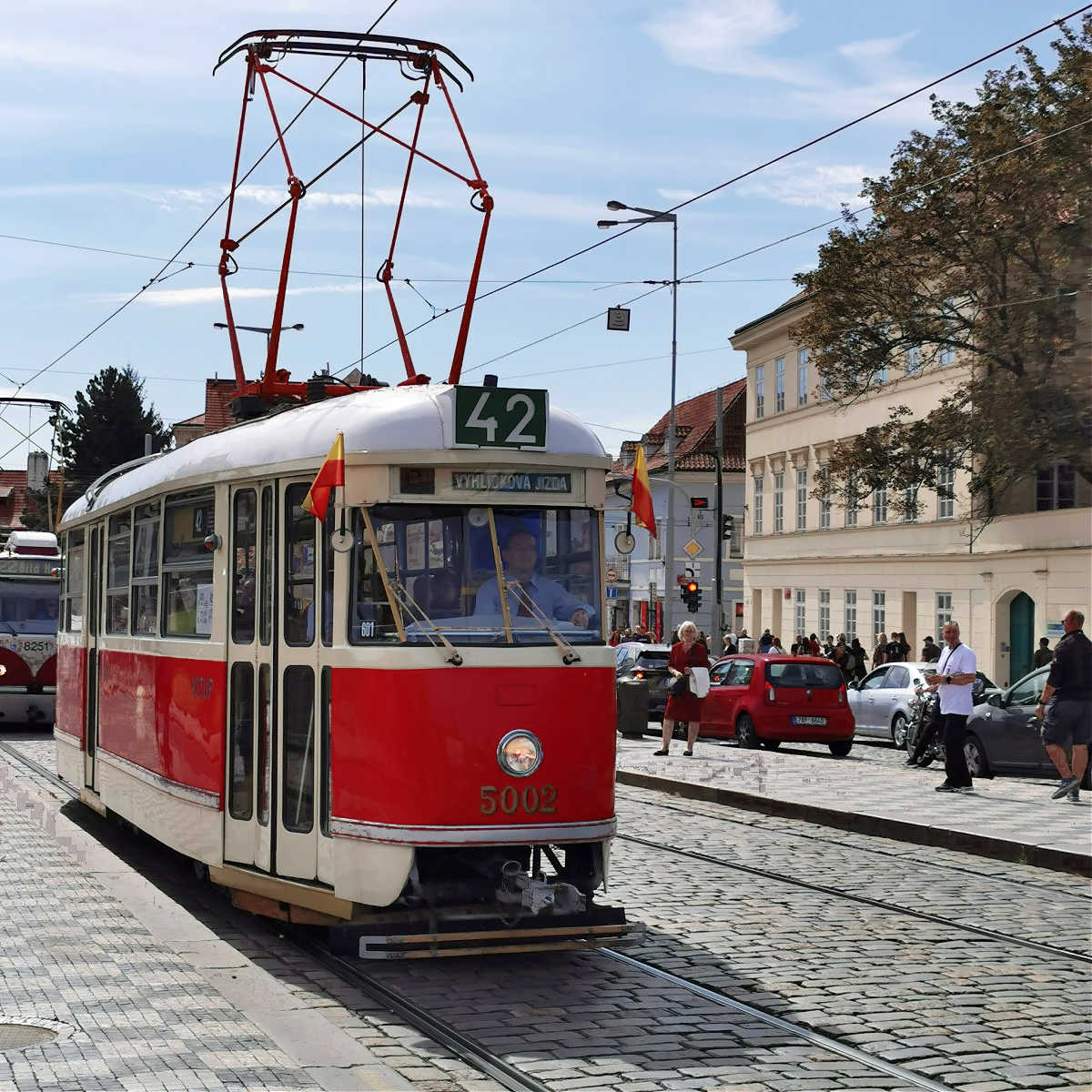
Validity of your ticket
The ticket is valid for 24 hrs from the time you validate it inside the tram. This means that you can buy your ticket at the airport when you arrive and then save it for the Saturday.
My tip would be to start using your ticket in the afternoon on Saturday, because then you can use it until the same time on Sunday and get more sightseeing done by spreading the use of the ticket into two days.
Where else can I use my historic tram ticket?
Your special historic tram ticket is also valid on the historic tram number 41 (a similar circular route around the central Prague, but it runs only during the main tourist season at the weekends from the end of March till mid November) and the historic bus line K (which does a circular route around Prague 6, partly following old trolley bus route – runs all year at the weekends and public holidays).
The ticket is, unfortunately, not valid on regular trams, underground or buses and you can’t use a regular Prague public transport ticket on this historic tram.
How to use the historic tram
You can hop on and off as you wish during the time your ticket is valid. You can also decide to stay on board for the whole journey (about 40 minutes), as the tram goes through the best parts of the central Prague. This is a great way to get your bearings and then decide where to get off and start exploring the city.
The historic tram doesn’t have separate tram stops from the regular trams. The names of the stops are the same and you will be able to see the number 42 added to the list of the trams at each of the designated stops and also the exact timetable.
One thing that’s very different from the regular trams is that because the tram travels in a loop it only stops on one side of the road.
What I mean is that if you go for example to Narodni Ulice stop and you look at the wrong side of the stop you might not see the 42 number mention and you might think that you are at the wrong stop. But if you cross the road to the opposite side (still Narodni Ulice stop) you’ll see the 42 listed and the tram stop will also include the timetable.
When the tram arrives at the stop, it will automatically stop, but you probably won’t see many people rushing to get it, so you’ll need to be quick to get on. Sometimes the tram stops behind a regular tram and opens it’s door and waits a little for people to get on.
Accessibility
Whilst it’s nice that the historic tram offers reduced rate for people with various disabilities, the actual tram is not very accessible. It’s a historic tram with rather steep steps up to the inner platform, which I doubt can adapt to a wheelchair user or even anyone with a serious mobility issues.
This means that if you have a child buggies or strollers you will need to be able to lift them up to the tram.
READ MORE
- Guide to Prague tram network – Tickets, Routes & History >>
- How to use public transport in Prague >>
Is riding on the historic tram No 42 in Prague worth it?
If you love history and industrial heritage, like I do, then I’m sure you’ll enjoy riding on this historic tram. Saying that, there are few things you should consider before hopping on.
Whilst I understand that the cost of this attraction can’t be really too cheap as it takes a lot to keep the trams running smoothly, the ticket is not exactly budget friendly.
If you want to travel as a family (two adults and two children) you’d spend 1000 CZK, which when you consider that a regular ticket for the same 24 hrs for the whole family would cost 360 CZK it’s quite a big difference.
Plus the historic tram only goes around the main places within the historic centre of Prague, so if you want to travel somewhere else you’d need to use a different tram and buy a separate ticket.
The tram intervals are 40 minutes, which means that if you get of anywhere, you have 40 minutes to explore the area before the next tram. I sometimes think that this is not quite enough time to visit anywhere and equally, if you get off somewhere by mistake, you’ve got 40 minute wait or try to work out something else in between.
One thing I’ve also realised that if you are riding on the historic tram you can’t actually take any pictures of the tram from the outside. You’ll need to get off anyway and catch it at the next loop, which takes a whole 40 minutes. You can of course take plenty of photos inside the tram, but the tram looks amazing on a photo against the historic houses in the centre.
If you don’t need to travel outside the main tourist area, then this historic tram is also a great way to stay away from the crowds. I rarely see the tram fully occupied and most of the times is half empty. This means that you can actually travel in style, always have a seat and where the trams are always packed like on the route to Prague Castle, you will arrive in the comfort of your own private carriage! Well almost….
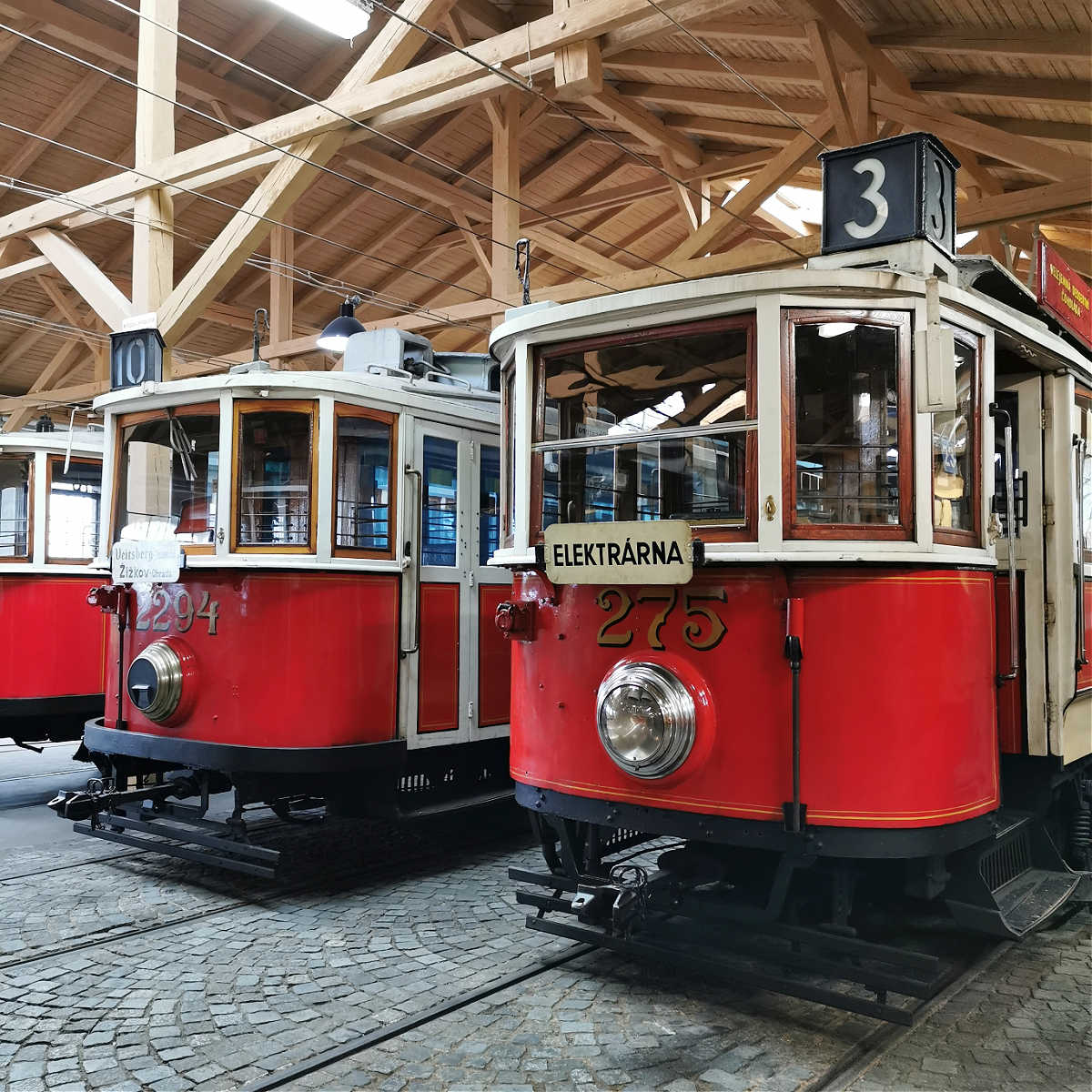
How to experience Prague historic trams if you are on the budget
If you are travelling to Prague on a budget, then I’d recommend you check the 42 tram timetable based on where you are and wait for it somewhere to take a photo (the red looks so good against the Prague architecture).
If you would like to see the tram from the inside (and see other trams too), I’d recommend that you visit the Public Transport Museum at Patočkova 132/2, 162 00 Praha 6-Střešovice (trams 1,2,22,25 – stop Vozovna Stresovice). The museum is 100 CZK (adults) or 60 CZK (children or senior ticket), but you get to see all the trams, buses and exhibitions about the Prague underground and cable cars.
The public transport museum is one of my favourite museums to visit as it’s packed with lots of exhibits and amazing pieces of travel history. The only thing is that all the exhibit descriptions are only in Czech, so you’ll need to use your translator app on your phone.
My criteria for including sights and places in this guide
To make this self-guided tram guide as easy as possible, I’ve only included places that are visible from each tram stop or very close by (like 3 minutes walk maximum).
Since there are hundreds of different places I could have included in this guide, I wanted to include the ones I’ve personally visited and keep coming back to.
Of course, I’ll mention the main tourist sites, but I also wanted to share with you my favourite places, that you might not find in the more traditional tourist guide.
I think, you should also know that there are other tram routes that would take you to all these tram stops, although none are circular like this historic tram. The Prague Castle to Narodni Trida can be done by tram number 22, whilst the tram number 15 will take you around the Cechuv Most, Namesti Republiky and Masarykovo Namesti. The Jindrisska to Wenceslas Square, Narodni Divadlo and Ujezd can be done by tram number 9.
Most of these stops are also walkable, so if you want to, you can always get to these attractions on foot.
The historic tram number 42 route
The tram starts and ends its loop at Dlabacov, which is the tram terminal. The loop is about 40 minutes long and you can hop on and off as you like.

Pohorelec
If you fancy a little longer walk to the Prague Castle through the historic Hradcany, this is the best stop to get off. This is a really lovely way to get to Prague Castle because as you walk down, you can also see the Loretta Monastery and Church, beautiful Czernin Palace Garden, the Picture Gallery, lots of lovely little shops and cafes and take a detour via the quirky streets of New World Town (Novy Svet).
You can also explore the Strahov Monastery (walk slightly up the hill to enter the monastery grounds) and then carry on walking on the top of Petrin Hill following the Hunger Wall all the way into the Kinsky Garden or walk down the hill to get to Ujezd or Malostranska, where you can pick up the historic tram loop again.

Brusnice
This is the closest tram stop if you want to access directly the cobbled streets of New World area, behind Prague Castle. I always like walking around there, because it’s like being transported into the last century (or the century before that!). You’ll find narrow streets, tiny houses and even on old-fashioned cottage there (which is now a little hotel and a restaurant).
There are also a couple other cafes, so it’s a great opportunity to stop here for a coffee before you hit the crowds at the Prague Castle. Whilst most guide books mention New World, the place is still not overcrowded as it’s really tucked away and most people seem to rush to the main Prague Castle area.

Prazsky Hrad
Get off here for the most direct access to Prague Castle, st. Vitus Cathedral, one of the most beautiful churches in Prague and the famous Golden Lane. Once you’ve had a look around, you can walk down the hill (either via the Castle Steps, which will lead you to Malostranska tram stop or via Nerudova Street (which will take you to Helichova street tram stop).
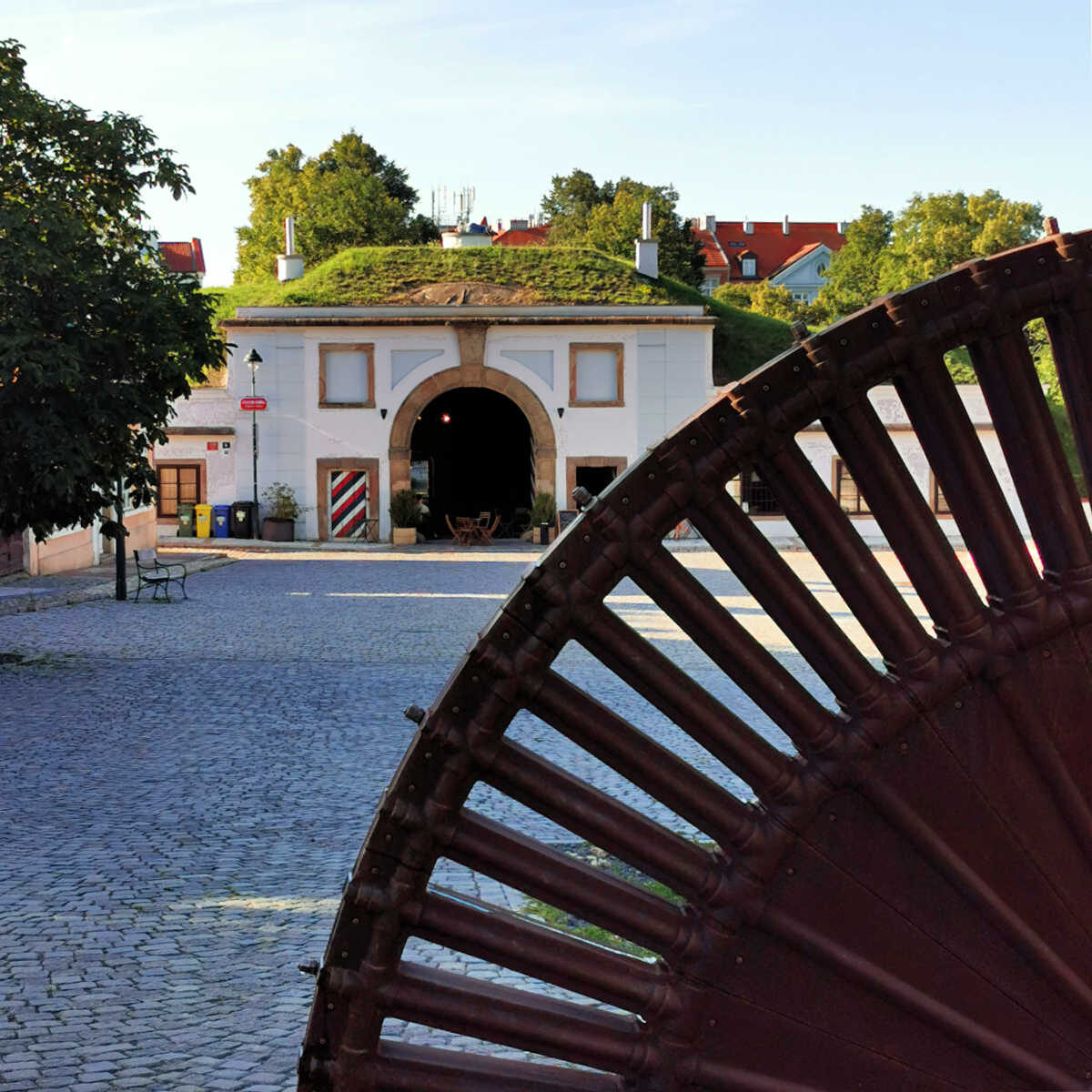
Kralovsky Letohradek
You can visit the gardens of Queen Anne’s Palace and walk through Chodkovy Gardens (one of many Prague’s parks and green spaces) to get to Prague Castle. You can also visit famous sculptor Bilek’s Villa and museum, where you can see his work and get insight into his family life. There is also a great little cafe at the Pisecka Gate, which is one of the last few remaining gates from the time that Prague had city walls.
If you cross the road, you can continue to walk on the top of the hill through Letna Park to the Technical Museum or Farming Museum.

Malostranska
This is a great stop, as there are so many different attractions close by.
If you walk towards the picturesque Charles Bridge you can see the Vojanov’s Gardens with peacocks just around the corner, visit Franz Kafka’s Museum, taste the freshly baked gingerbread at Gingerbread House shop and carry on walking towards the green Kampa Island.
You can also walk up the old Castle stars to Prague Castle (which is quite a steep hike!) or stay on the same level and explore the lower Prague Castle Gardens (moderate entrance fee) or the Furstenberk’s Garden (low entrance fee) or Walledstejn’s Garden (free to enter).
There are also a couple of large art galleries very close to the Malostranska stop. The more traditional one is Valdstejn’s Art Gallery (in Valdstejnska Street, as you walk through the little park next to the tram and underground station).
The second one (in a rebuilt old electric transformer station) is the modern Kunsthalle Gallery, which recently opened, but is already getting a great reputation for innovative building design, interactive exhibitions and unusual ways of displaying art.
The gallery coffee place has a great selection of coffees, pastries and sandwiches and you don’t have to buy a ticket to the gallery to visit the cafe.

Pravnicka Fakulta
Get off here to explore the Vltava river bank with lovely walk next to the river. There are boat restaurants and cafes alongside the river and the boat tours start from here too. There is a really great view of the Prague castle from the little park next to the Rudolfinum (the large concert hall).
This tram stop is also best for the Jewish Quarter – Josefov, where you can visit the five synagogues as well as the old Jewish cemetery and learn about the legend of Prague Golem at the Old New Synagogue.
If you like upmarket shopping, this tram stop is also at the end of ‘Parizska Street’ which is the most prestigious shop street in Prague where you can find all the designer shops.
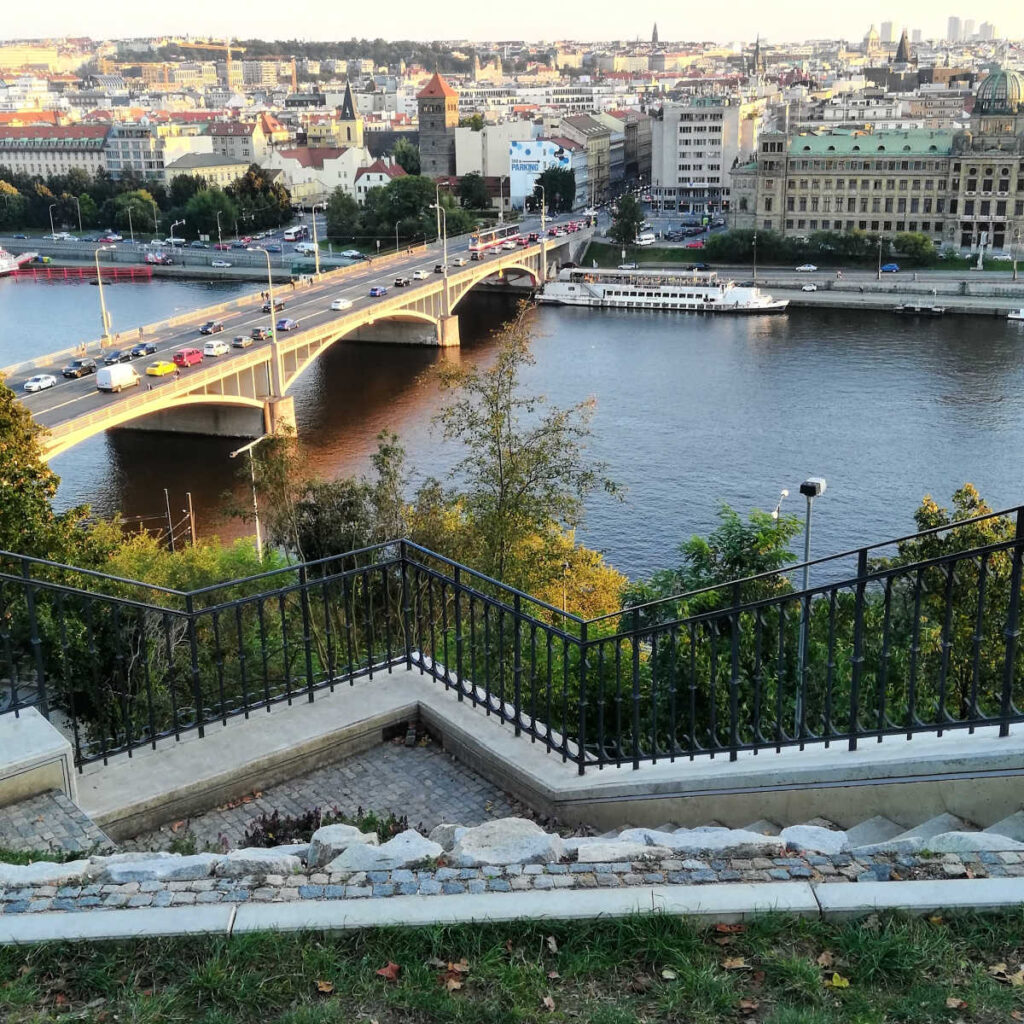
Cechuv Most
Cechuv Most is one of the historic bridges in Prague. If you get off at this stop, you can climb the steep stairs (or walk up the winding paths) up to one of the largest parks in Prague – the beautiful Letna Park, where there is a great view of Prague and all the bridges across Vltava river. You can also have a great beer in a Letna Beer Garden and then continue to the National Technical Museum or the Farming Museum.
Dlouha Trida
This is a great stop if you want to start walking to the Old Town Square through the quirky back streets. There is also the beautifully decorated Aux Merveilleux de Fred coffee place and patisserie shop with great coffee and delicious cakes.
Just round the corner in Soukenicka Street is one of my favourite coffee places, ‘FofrKafe – Soukenda’, which is run by the local church. It’s very cosy there, the staff are lovely and the coffee and cakes too (and prices are very normal for what is practically the centre of Prague…).

Namesti Republiky
If you fancy doing a bit of shopping, you can visit one of the many shopping centres in Prague – the modern Palladium Shopping Centre (in the old army barracks) or the more traditional department store ‘Kotva’ (The Anchor) built in 1975.
I also like the ‘Na Porici’ street (the tram will initially turn into this street before it turns right towards the train station) where you can see the oldest and still in use department store called ‘Labut’ (the Swan).
Opposite is an amazing building in a cubism style with a coffee place at the front and bank inside (you can have a look inside the corridor and peak though the doors). Cafe Imperial is also worth mentioning here, as it’s part of an amazing art deco hotel. Their buffet breakfast is one of the best ones in Prague and lunch and evening menu is great too. I stayed in this hotel few years ago and it was such a treat!
Namesti Republiky is also great stop if you want to visit the Powder Tower, the Municipal Hall or walk through the ‘Na Prikope’ traffic free street towards the Wenceslas Square, the historic Estate Theatre and the Old Town Square.

Masarykovo Nadrazi
The Masarykovo Train Station is the oldest train station in the centre of Prague and also the oldest one still in use as a final destination train station in the Europe (meaning it’s the end stop and all trains terminate there). It was opened in 1846 and whilst it’s only a few minutes walk from the Prague Main Train Station (Hlavni Nadrazi), the trains don’t go between the two train stations.
The Masarykovo Train Station has an amazing wooden and glass entrance canopy over the station entrance from the tram side. The entrance from the side street is nicely restored, too and you can get an idea how grand this train station looked in its heyday.
The outside of the Masarykovo Train Station is being redeveloped (you can see the plans in the station waiting area) and once finished will include parks and walkways to connect to Karlin and beyond.
At the back of Masarykovo Train Station (as the trains are leaving the platforms) you can also see some large buildings. These are housing old steam trains which are going to be part of a new train museum. The buildings are only open on special steam days as there is still a long way before they become open as a proper museum, which is planned for the 28 October 2028.

Jindrisska
If you fancy climbing yet another tower, then Jindrisska Tower has a good view from the top and there are also history exhibitions on each level as you are walking up. It’s a little bit difficult to imagine now, but the Jindrisska Tower belonged to the Church that you see on the other side of the tram line – the Roman Catholic Church of St. Henry and St. Kunhuta.
The church wasn’t probably best pleased when towards the end of the 19 century a new tram line was designed to go right in the middle of the church cemetery and in between the church bell tower and the church itself. The small cemetery was turned into a park and the tombstones are now decorating the sides of the church.
If you follow Jerusalemska Street you will see the colourful Jubilee Synagogue.
Jubilee Synagogue was originally called the Synagogue of Emperor Franz Joseph. It was built in 1905-1906 as a replacement for the destroyed synagogues after the clearance of the Prague ghetto. It is the youngest and largest synagogue of the Prague Jewish community. The building is built in an interesting mixture of Art Nouveau and Moorish style and it’s definitely worth visiting.

Vaclavske Namesti
The tram line runs through the middle of this long square, which means that you can walk down through Wenceslas Square to the Old Town Square or walk up to the National Museum.
I also always pop in to the Svetozor shopping Passage as it has one of the best ice-creams in Prague and I can never resist their new ice-cream flavours, which change every few days or so. You will also find here the independent art Svetozor Cinema and Svetozor self-serving Czech canteen-style restaurant, which is open 7 am – 3 pm – Monday – Friday.
If you walk across Vodickova Street you get to the Lucerna Passage, where you’ll find another art cinema, the famous upside down horse by David Cerny, access to the Lucerna roofs and the Lucerna coffee bar (traditional retro coffee place linked to the Lucerna cinema where everyone has a drink before they go to see the film).
One side of the passage will also take you to the Novak House Shopping Passage, which was originally built in 1902 in Art Nouveau style. There are many separate shops, art galleries and theatres inside this complex. It’s definitely less busy than the Lucerna Passage and a good place just to stroll and enjoy the architecture.

Vodickova
Pick up freshly made filled rolls, traditional Czech cakes, delicious opened sandwiches and other delis from the Liberske Lahudky (open every day until late), one of my favourite bakeries in Prague.
Vodickova tram stop is also the closest stop to walk to Karlovo Namesti Park via Vodickova Street and New Town Hall. The New Town Hall is open to public and you can climb the stairs to view the New Town and Charles Square from the top of the tower.
Lazarska
Right on the corner as the tram is turning into the Lazarska Street you will see one of the great examples of cubism style in Prague – the Diamond House.
The house was originally built for a local pharmacist František Schnöbling who purchased a piece of land on the corner of Lazarska street at the beginning of the 20th century. The house was built in 1912 by Matěj Blecha’s company with facades in the style of classicizing Art Nouveau based on the plans of F. Ohmann. The facades were redone in Cubist style, possibly following Emil Králíček’s design and the house finished the next year (1913).
Interestingly, the house is connected to the Holy Trinity church next door by a Cubist arcade dating back to 1913. This arcade was designed by architect Pfeiffer and features a statue of St. Jan Nepomucký by Jan Brokoff from 1717. The house is still privately owned, but you can walk around and see it from the outside.
The ground floor has a discounted English Book Shop, which is great for holiday novel reading, but they also sell guidebooks, history books and books about Prague in the English language.
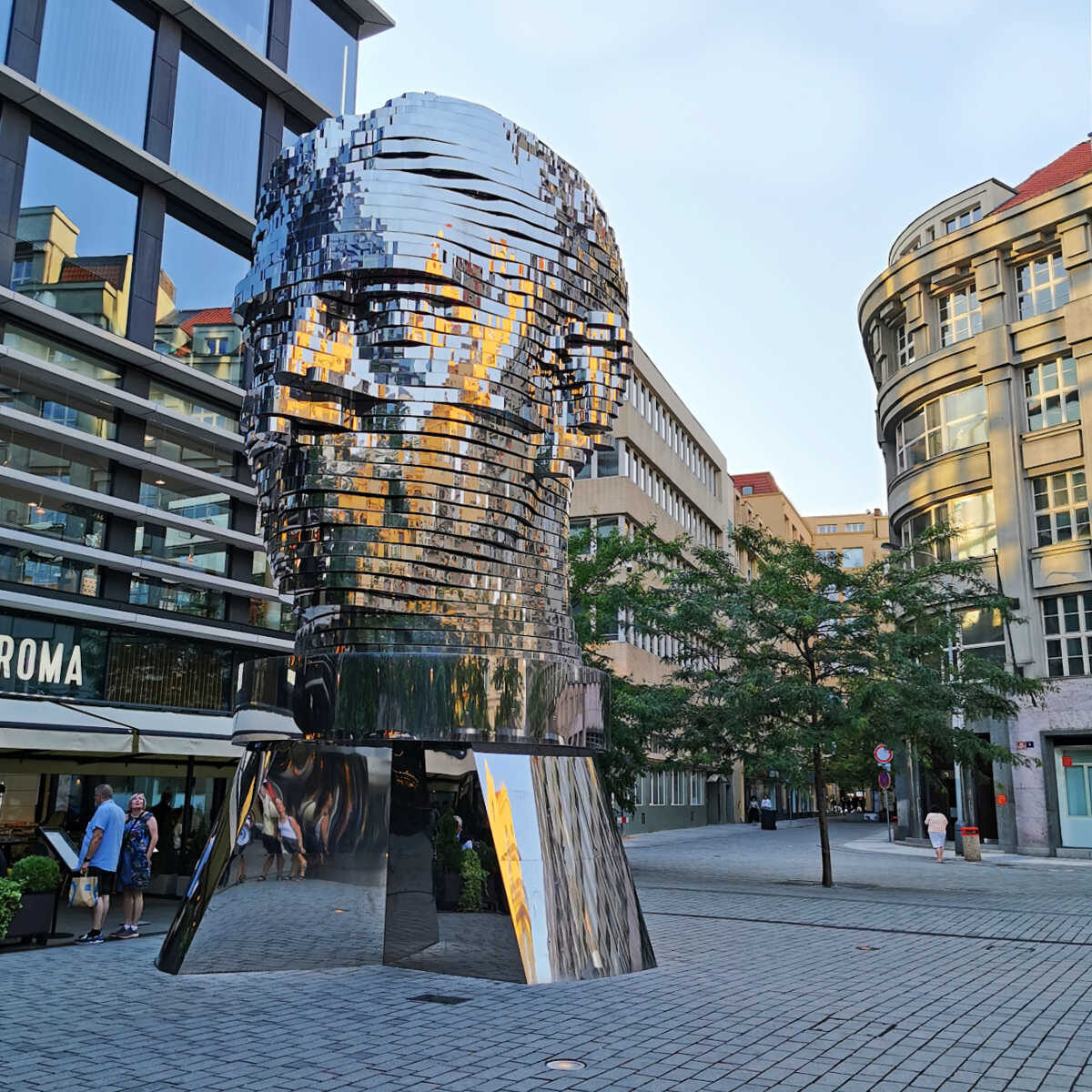
Narodni Trida
Get off here to carry on walking on Narodni Street to get to the bottom of Wenceslas Square and to the Old Town Square or further into the historic centre.
There are a lot of historic cafe places around Narodni Street, for example, 1930s style Cafe Louvre, which is a great value for breakfast. Last time I visited, the breakfast offer was reassuringly old-fashioned – serving traditional Czech breakfast, the staff lovely and the setting just perfect. It can get very busy at the weekends.
If you want something more down to earth and a bit quirky, I also love the new Super Tramp Coffee, which is hidden in the courtyard of an old printing building. I found this place a couple of years ago and I keep coming back for a good coffee and homemade cakes.
To get there from Narodni Trida, follow the tram towards Karlovo Namesti and then find a little passageway just opposite the Diamond House, house number 15/89. If the passageway is not open the coffee place is closed, too, so don’t worry trying to find another way in.
On the corner of Narodni Trida you can visit the newly reopened Maj department store (with David Cerny’s Spitfire Butterflies Statues), now offering shops, games, children playground and fab views from the roof terrace.
There is a large shopping centre straight as you step out of the tram (with a good supermarket) and you can walk through to get to Kafka’s Moving Head statue by David Cerny. The statue is made out of 42 separate layers, which slowly rotate around for about 15 minutes every hour.
If I’m around there lunch time, I always pop into Vegetarian Dhaba for a quick lunch. This is all vegetarian food in Indian style set out as self-service. You plate up your own food, selecting what you like and the price is based on weight. There is always a good selection of various salads, mains, sauces and sides.
Another walk you can take from the Narodni Trida tram stop is to walk to the Old Town Square through the narrow cobbled stone streets – just head towards the street ‘Na Perstyne’ and continue to whichever street you want. No matter which street you turn to, you will find interesting houses, churches, shops and restaurants on your way.
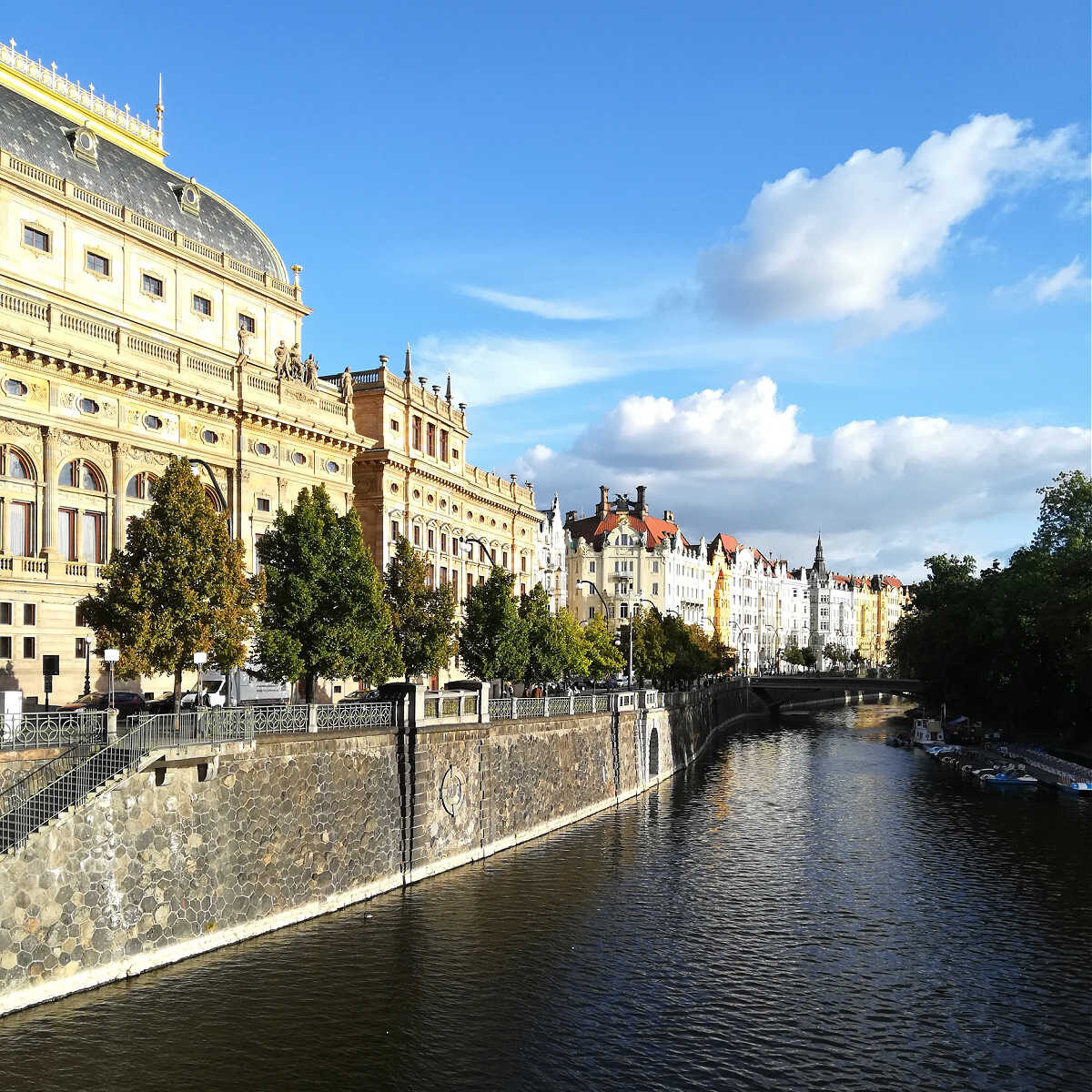
Narodni Divadlo
I always check out what’s on at the National Theatre, as a lot of performances now have English subtitles, including plays, operas and ballets. Performances are nearly every day, including matinees on some days, and tickets are available in different price tiers (with standing tickets for only 150 – 250 CZK depending on the type of performance).
Right across the National Theatre is the famous Cafe Slavia, where artists, writers and philosophers used to hang out and work from.
If you walk towards Shooter’s Island, you can get some great photos of Prague Castle together with Charles Bridge.
If you want to take a little detour, the Dancing House is only about 5 minutes walk following the river Vltava.
You can also visit Shooter’s Island (which is accessible via steps from the bridge between Ujezd and Narodni Divadlo). Shooter’s Island is one of my favourite places to visit when I want to escape the crowds in Prague.
There are a couple of places to get coffee or a drink, light snacks and there is also a restaurant and during summer there are concerts and in the winter an ice-skating rink. It’s also one of the places in Prague where you can watch nutrias (coypu) (looks like a very large otter, but it’s related to rats) playing freely in the water. Please don’t feed them, though, the town is trying to contain them as they are not native to Prague or Vltava River.
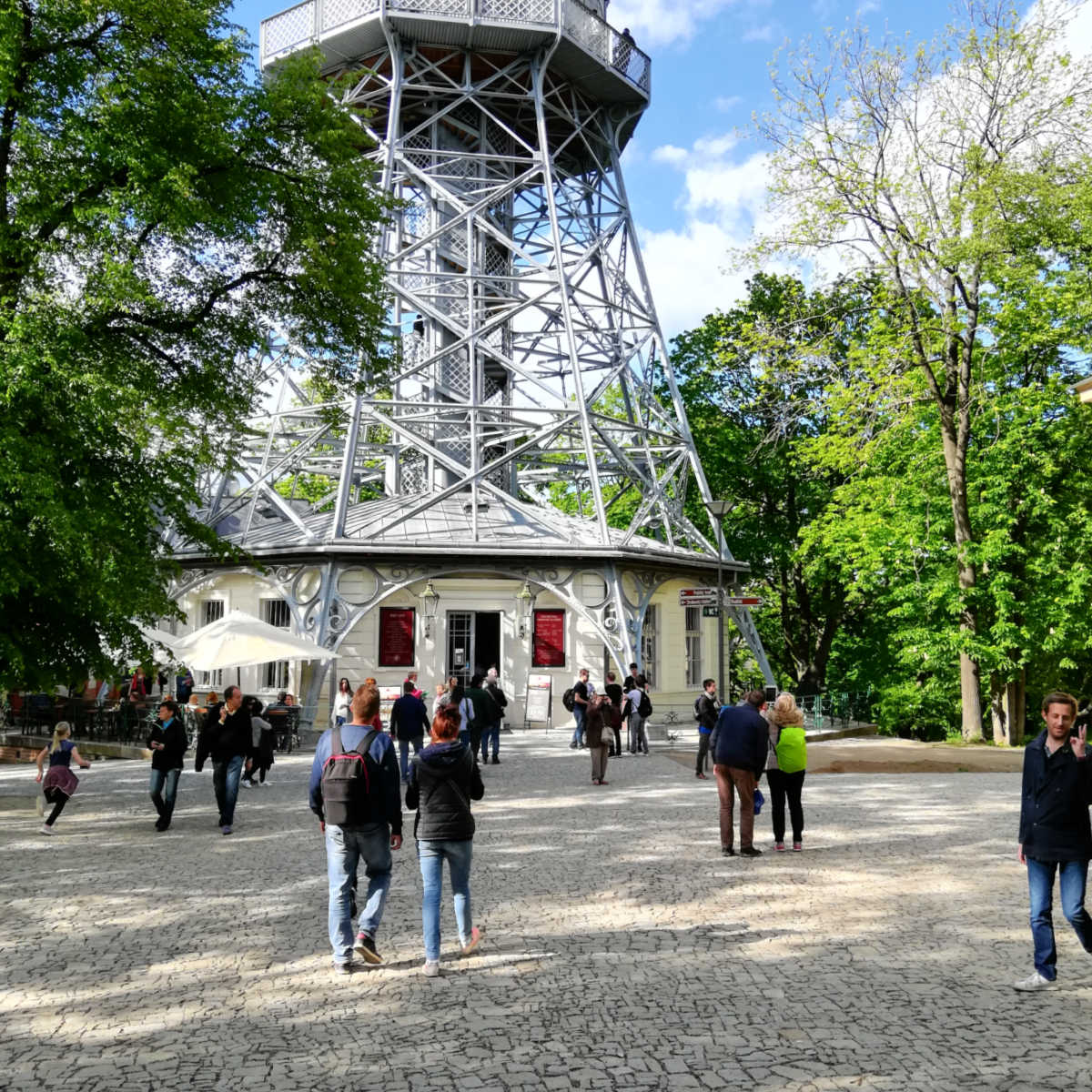
Ujezd
Get off here to taste another great ice-cream at Angelato and take the funicular to the top of the Petrin Hill (or walk up through the gardens and park if you like).
The top of Petrin Hill has amazing views of Prague and you can either walk towards Prague Castle following the Hunger Wall or the other way to Kinsky Garden and Park and the National Folk Museum.
There is, of course, the Petrin Lookout Tower to explore, Mirror Maze Castle, Rose Garden or Observatory on the top of the hill, or you can just enjoy a light lunch in a couple of different coffee places on Petrin Hill or Nebozizek – a pretty restaurant half-way up the hill between Ujezd and Petrin Hill.
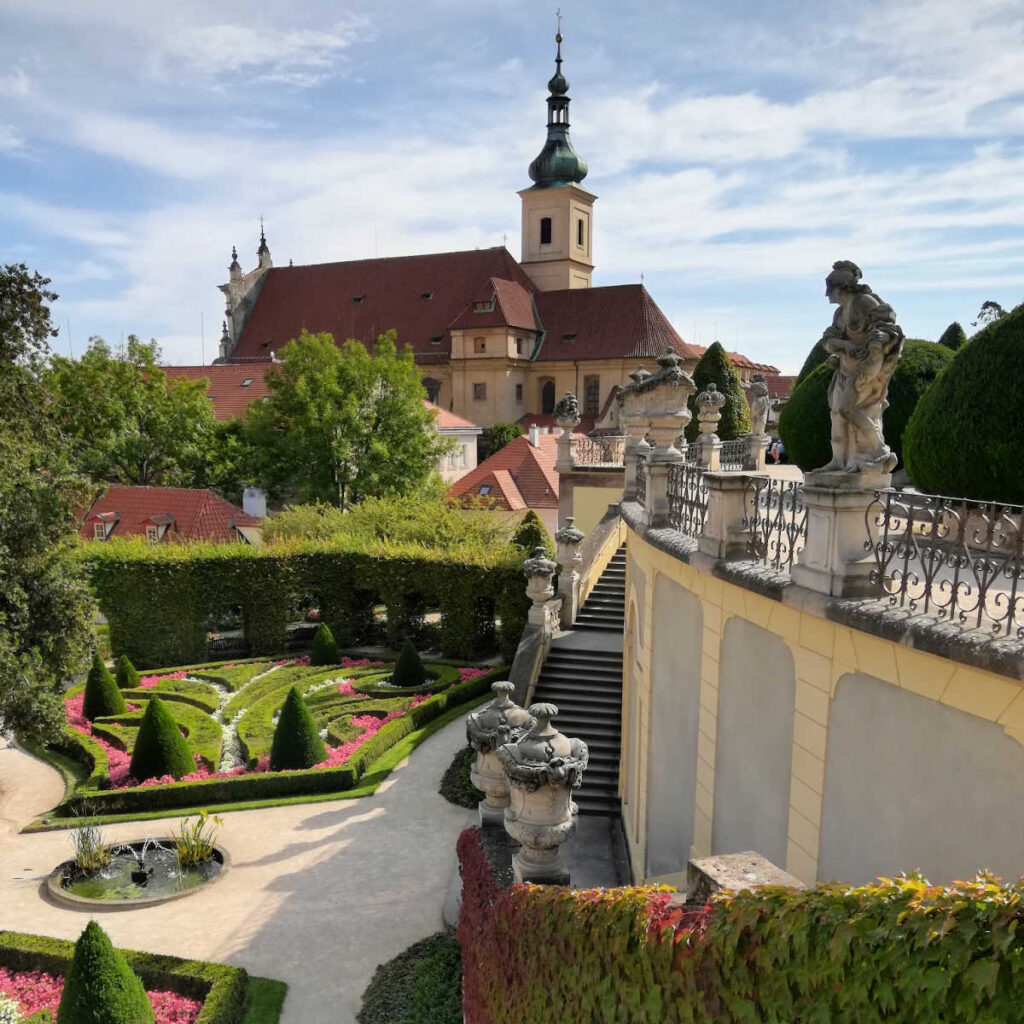
Hellichova
Visit the church of famous Infant Jesus of Prague for quiet contemplation and great baroque church art and little museum of the outfits for the Infant Jesus (free to enter).
I always stop at the coffee cart at the front of the church run by the church staff. The coffee is great, the money goes to a good cause, and I love the name! The coffee cart is called ‘Bozi Kafe’, which means in Czech ‘God’s coffee’ but ‘Bozi’ also means ‘amazing’ or ‘superb’ in Czech slang).
If you walk a few steps back on the same side of the road, you find the entrance to the beautiful and historic Vrtba Garden hiding behind townhouse gates. It’s a very pretty garden designed in several layers in an Italianate style with flowering plants, trees and decorated with statues.
There is a moderate entrance fee to pay, but I think it’s worth it as you can also get a brilliant view of Prague Castle and the centre of Prague from the top layer of the garden.
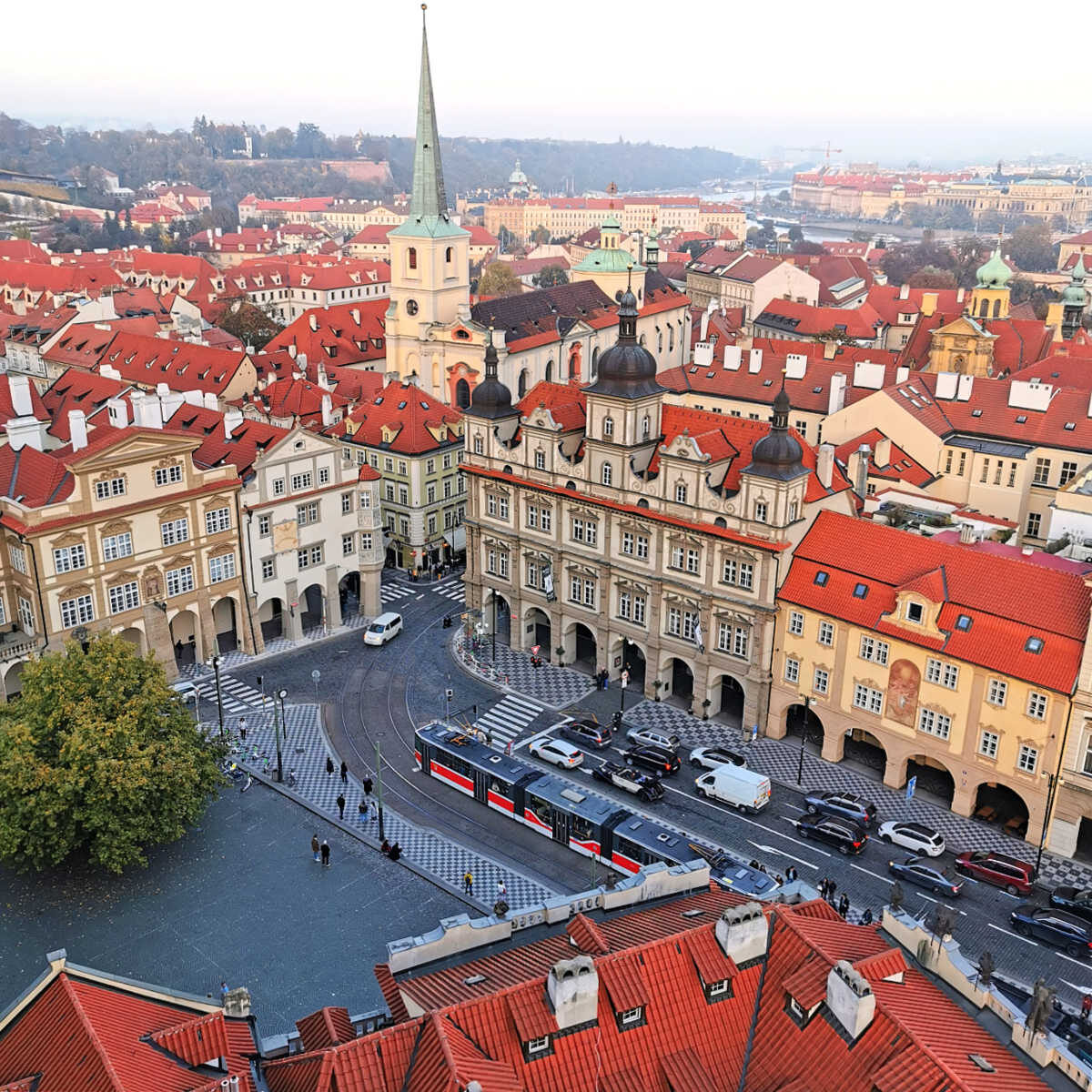
Malostranske Namesti
From here you can walk up the Nerudova street to the lower Prague Castle stairs or cross the Vltava River by walking on Charles Bridge, which is always on my must see attractions in Prague list.
If you like to see this part of Prague from a great height, visit the St. Nicholas tower (by the side of the same church). You will not only get great views, but also see a good example of how towers were operated in the olden times.
You’ll see two different flats of the people who looked after the tower and there is even a better surprise on the top of the tower. In the 1950s the Czech secret service used the tower to watch and listen from.
After this stop, the tram goes up the hill back to the top, stopping again at Malostranska, Kralovsky letohradek, Prazsky Hrad, Brusnice, Pohorelec and Dlabacov.
This blog post was originally written on 17 October 2023 and last updated on 17 October 2023
PIN THIS GUIDE FOR LATER







